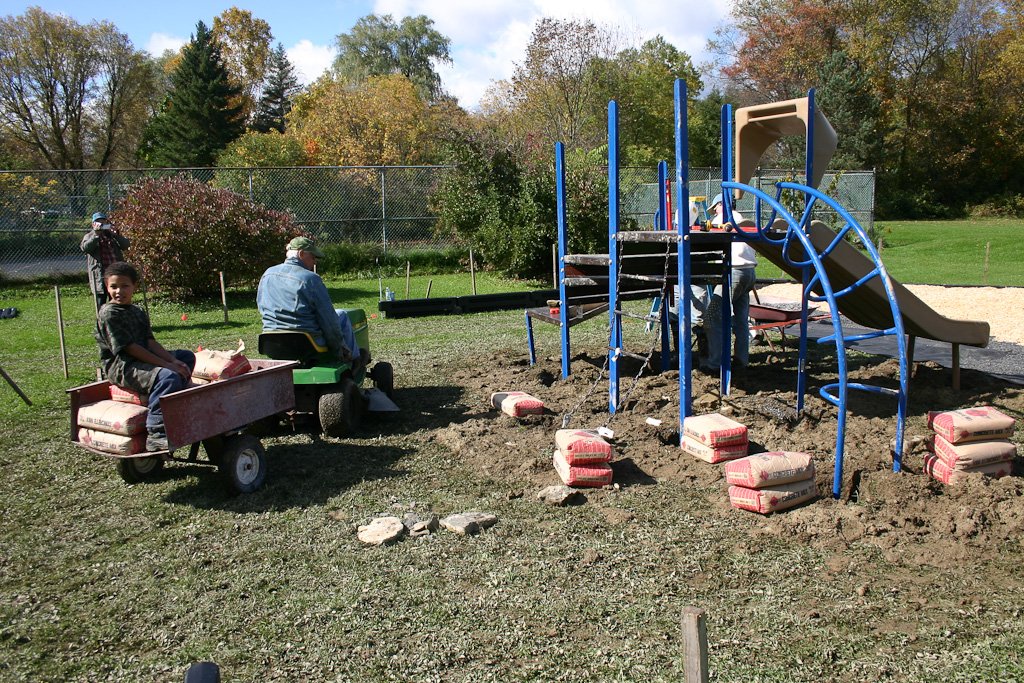Enhancing Biodiversity in Your Child’s Schoolyard: A Pathway to Understanding Local Native Ecosystems
Enhancing biodiversity in schoolyards is not only beneficial for the environment but also provides numerous educational opportunities for students. By creating a native ecosystem in the schoolyard, students can learn about local native plants and wildlife while also providing a habitat for local species. Engaging the school community in biodiversity conservation is essential for long-term success. By involving students in planning and maintenance, collaborating with local conservation organizations, and organizing biodiversity awareness events, schools can create a culture of environmental stewardship.
Here are the key takeaways from this article:
Key Takeaways

- Biodiversity in schoolyards provides numerous benefits, including improved mental health and educational opportunities for students.
- Creating a habitat for local wildlife is essential for supporting biodiversity in schoolyards.
- Selecting native plants is crucial for creating a balanced and sustainable ecosystem.
- Incorporating water features, such as ponds or rain gardens, can enhance biodiversity in schoolyards.
- Engaging students in planning and maintenance, collaborating with local conservation organizations, and organizing biodiversity awareness events are effective ways to involve the school community in biodiversity conservation.
Importance of Biodiversity in Schoolyards
Benefits of Biodiversity in Schoolyards
Biodiversity in schoolyards offers numerous benefits to students, wildlife, and the environment. Increased biodiversity provides opportunities for students to learn about and appreciate the diversity of life. It also supports the health and well-being of local wildlife by providing them with food and shelter. Furthermore, a diverse ecosystem in schoolyards helps to improve ecosystem services, such as pollination and pest control. By experiencing the interconnectedness of species and their habitats, students develop a deeper understanding of the importance of biodiversity conservation.
A table showcasing the different species found in the schoolyard can be seen below:
| Species | Description | Conservation Status |
|---|---|---|
| Bird | Aves | Least Concern |
| Bee | Insect | Endangered |
A list of activities that can be done to promote biodiversity in schoolyards includes:
- Planting native trees and flowers
- Creating birdhouses and bat boxes
- Installing a butterfly garden
Biodiversity is the key to a thriving ecosystem and a sustainable future.
Creating a Habitat for Local Wildlife
Creating a habitat for local wildlife is an essential aspect of enhancing biodiversity in schoolyards. By selecting native plants that provide food and shelter, schools can attract a diverse range of species, including birds, butterflies, and insects. Additionally, incorporating water features such as ponds or birdbaths can further support wildlife by providing a source of hydration. Schools can also create nesting boxes and insect hotels to provide safe spaces for animals to breed and hibernate. By creating a welcoming environment for local wildlife, students can observe and learn about different species, fostering a deeper appreciation for nature and the importance of conservation.

| Species | Habitat Requirements |
|---|---|
| Birds | Trees, shrubs, and open areas |
| Butterflies | Nectar plants and host plants |
| Insects | Native plants and diverse vegetation |
Enhancing biodiversity in schoolyards not only benefits the local ecosystem but also offers valuable educational opportunities for students.
Designing a Native Ecosystem in the Schoolyard
Selecting Native Plants
When selecting native plants for the schoolyard, it is important to consider their suitability to the local environment and their ability to support local wildlife. Native plants are well-adapted to the climate, soil, and rainfall conditions of the area, making them more resilient and easier to maintain. They also provide food and shelter for native insects, birds, and other wildlife, contributing to the overall biodiversity of the ecosystem. Some examples of native plants that can be incorporated in the schoolyard are:
| Plant Name | Characteristics |
|---|---|
| Milkweed | Attracts monarch butterflies |
| Oak tree | Provides habitat for birds |
| Wildflowers | Attracts pollinators |
By selecting native plants, we can create a balanced ecosystem that supports a wide range of species and promotes a healthy environment for both plants and animals.
Creating a Balanced Ecosystem
Creating a balanced ecosystem is crucial for maintaining the health and stability of the schoolyard’s native ecosystem. By incorporating a variety of native plant species that provide food, shelter, and nesting sites for local wildlife, we can ensure a diverse and thriving ecosystem. Additionally, it is important to consider the interactions between different species and their roles in the ecosystem. For example, planting pollinator-friendly plants can attract bees and butterflies, which play a vital role in pollination. By creating a balanced ecosystem, we can foster a harmonious environment where different species can coexist and thrive.
| Native Plant Species | Benefits |
|---|---|
| Milkweed | Attracts monarch butterflies |
| Oak trees | Provides habitat for birds |
| Wildflowers | Supports pollinators |
Creating a balanced ecosystem is not only beneficial for the local wildlife but also provides an opportunity for students to observe and learn about the interconnectedness of different species and their roles in maintaining a healthy ecosystem.
Incorporating Water Features

Water features play a crucial role in enhancing biodiversity in schoolyards. By providing a source of water, such as a pond or a bird bath, native wildlife is attracted to the area, creating a thriving ecosystem. Additionally, water features offer educational opportunities for students to learn about aquatic habitats and the importance of water conservation. To ensure the success of water features, it is important to maintain a balance by incorporating native aquatic plants and regularly monitoring water quality. By incorporating water features, schools can create a dynamic and interactive environment that fosters a deeper understanding and appreciation for local native ecosystems.
| Benefits of Incorporating Water Features |
|---|
| Attracts native wildlife |
| Provides educational opportunities |
| Enhances biodiversity |
Water features create a vibrant and engaging ecosystem where students can observe and learn about the wonders of aquatic life.
Engaging the School Community in Biodiversity Conservation
Involving Students in Planning and Maintenance
Engaging students in the planning and maintenance of the native ecosystem is crucial for fostering a sense of ownership and responsibility. By involving students in the decision-making process, they can learn about the importance of biodiversity and gain practical skills in habitat restoration. Collaborative projects such as creating a student-led gardening club or nature monitoring team can empower students to take an active role in preserving their schoolyard’s biodiversity.
Through hands-on activities, students can develop a deeper appreciation for the natural world and become stewards of the environment. Encouraging their creativity and curiosity, students can also contribute to the development of innovative ideas for sustainable practices within the ecosystem. By actively involving students, schools can instill a lifelong commitment to biodiversity conservation and inspire the next generation of environmental leaders.
| Student Involvement Opportunities |
|---|
| – Join the gardening club |
| – Participate in nature monitoring |
| – Contribute to sustainable practices |
Engaging students in biodiversity conservation not only benefits the schoolyard but also nurtures a deeper understanding and connection to the local native ecosystem.
Collaborating with Local Conservation Organizations
Collaborating with local conservation organizations is a crucial step in enhancing biodiversity in your child’s schoolyard. These organizations have the expertise and resources to provide guidance and support in creating a thriving native ecosystem. By partnering with them, schools can tap into their knowledge to select native plants that are suitable for the local environment.
Additionally, conservation organizations can assist in creating a balanced ecosystem by recommending the right mix of plants, insects, and other wildlife. Through these collaborations, schools can also gain access to educational programs and workshops that will help students understand the importance of biodiversity conservation. By working together with local conservation organizations, schools can create a sustainable and vibrant habitat that benefits both the environment and the students.
| Benefits of Collaborating with Local Conservation Organizations |
|---|
| – Access to expert guidance and resources |
| – Opportunities for educational programs and workshops |
| – Support in creating a balanced and thriving ecosystem |
| – Increased awareness and appreciation for biodiversity |
Organizing Biodiversity Awareness Events
Organizing biodiversity awareness events is a great way to engage the school community and raise awareness about the importance of biodiversity in schoolyards. These events can include guest speakers, workshops, and hands-on activities that allow students to learn about local native ecosystems and the role they play in supporting wildlife.
By involving students in the planning and execution of these events, they can develop a deeper understanding and appreciation for the natural world. Additionally, collaborating with local conservation organizations can provide valuable resources and expertise to ensure the success of these events. By organizing biodiversity awareness events, schools can inspire students to become stewards of the environment and actively contribute to biodiversity conservation.
| Event Type | Description |
|---|---|
| Guest Speakers | Experts in biodiversity conservation share their knowledge and experiences |
| Workshops | Interactive sessions that teach students about native plants and wildlife habitats |
| Hands-on Activities | Engaging activities that allow students to explore and interact with the local ecosystem |
Biodiversity is not just a buzzword; it is the key to a sustainable future. By organizing awareness events, we can empower the next generation to protect and preserve our precious natural heritage.
Frequently Asked Questions

Why is biodiversity important in schoolyards?
Biodiversity in schoolyards is important because it supports the health and well-being of local ecosystems, provides educational opportunities for students, and enhances the overall beauty and functionality of the school environment.
How can biodiversity benefit students?
Biodiversity in schoolyards provides students with opportunities to learn about local native ecosystems, understand the interconnectedness of species, and develop a sense of responsibility towards the environment.
What are the benefits of creating a habitat for local wildlife in schoolyards?
Creating a habitat for local wildlife in schoolyards can attract a variety of species, promote pollination, control pests naturally, and provide students with firsthand experiences of observing and studying wildlife.
How can native plants be selected for the schoolyard?
Native plants can be selected for the schoolyard by considering their adaptability to the local climate, their ability to support local wildlife, and their educational value.
Why is it important to create a balanced ecosystem in the schoolyard?
Creating a balanced ecosystem in the schoolyard is important because it promotes the health and resilience of native plants and wildlife, reduces the risk of invasive species, and enhances the overall sustainability of the ecosystem.
What are some examples of water features that can be incorporated in the schoolyard?
Some examples of water features that can be incorporated in the schoolyard include rain gardens, ponds, birdbaths, and small streams.


Ms. Kerri’s Corner provides a exciting virtual space for preschool learning. Through a variety of engaging activities, she exposes young minds to early math, literacy, science and social-emotional skills in a developmentally appropriate way. Centers for blocks, art, books and music allow children to explore hands-on learning at their own pace. Guided lessons subtly introduce number sense, letter sounds and narrative thinking. Careful observation gives insight into each child’s progress across domains. Viewers are also invited to participate, reinforcing that their ideas are valued. By making learning fun yet purposeful, Ms. Kerri lays the groundwork for future academic success while fostering creativity and imagination. Her program offers preschoolers valuable screen-based learning experiences.




